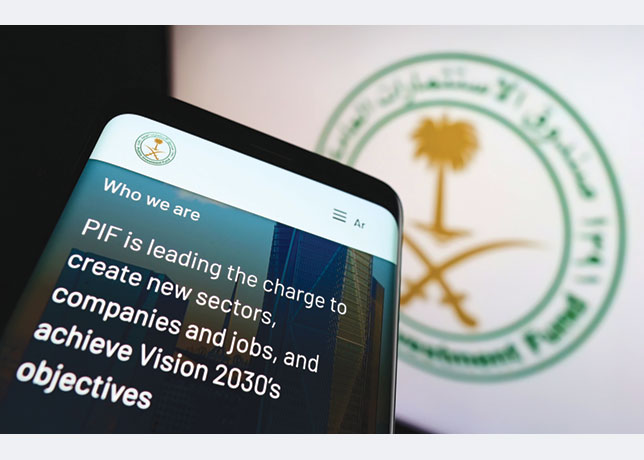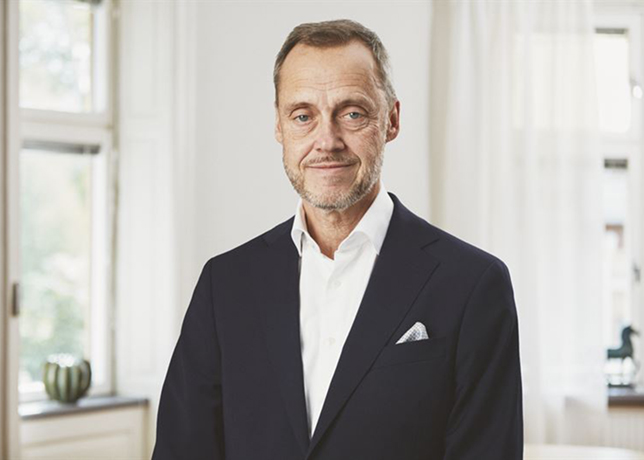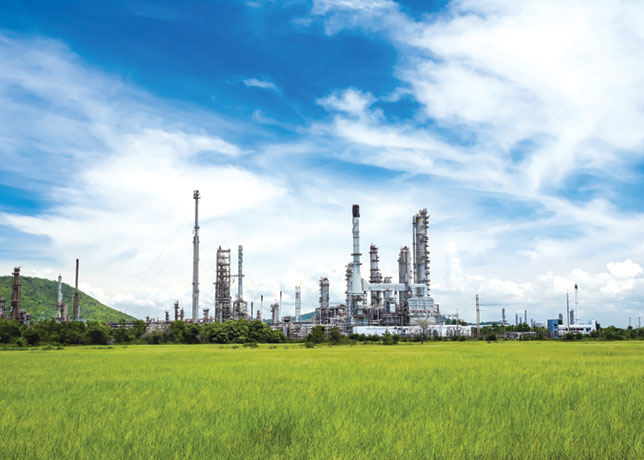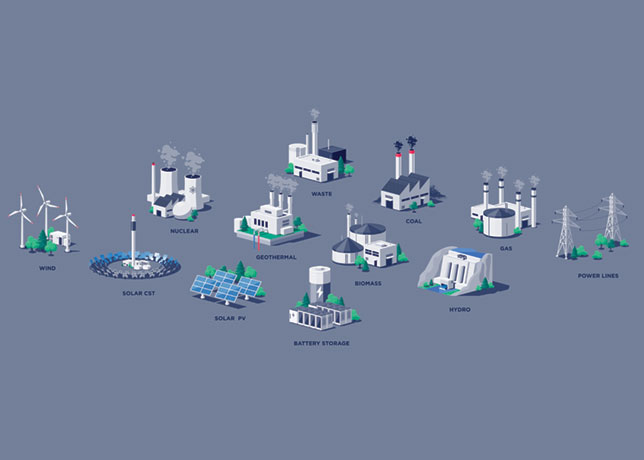
 Prince Mohammed ... future-proofing KSA's economy
Prince Mohammed ... future-proofing KSA's economy
By staying true to the principles of Vision 2030 and harnessing the collective will and ingenuity of its people, Saudi Arabia can overcome obstacles and emerge as a global beacon of progress and prosperity
In the realm of national development, a vision serves as more than just a lofty idea; it's a roadmap guiding a nation towards a brighter future.
Saudi Arabia’s Vision 2030 epitomises this concept, offering a comprehensive plan to steer the Kingdom away from its dependency on oil towards a diversified, knowledge-based economy.
It is understood that the demand for oil will persist for the foreseeable future, and the Kingdom, being the most cost-effective producer, holds a significant competitive advantage in this industry for the foreseeable future.
While oil, gas and petrochemical sectors, which are projected to maintain decades of productivity and market demand ahead, will remain fundamental to the economy, the focus will be on reducing the carbon footprint of these sectors.
Efforts will be intensified in both upstream and downstream sectors, with a particular emphasis on advancing research in petrochemicals to diversify the range of products derived from crude oil.
But despite its historical association with oil extraction the Kingdom is now on a trajectory towards environmental stewardship and renewable energy, in alignment with the objectives of Vision 2030.
And following with the global trend towards sustainable development, the Kingdom is embarking on an ambitious journey outlined in its national vision.
This vision encompasses a strategic shift towards renewable energy sources, aiming to diminish reliance on conventional energy and foster long-term sustainability.
Under Vision 2030, Saudi Arabia has instituted substantial policy initiatives to bolster renewable energy endeavours.
Recognising the necessity for such a transition, the nation is actively promoting renewable energy sources while endeavouring to lessen dependency on traditional energy reservoirs.
Yet, the transition to renewable energy presents its own set of challenges, notably the necessity for a plethora of critical minerals such as copper, nickel, lithium, and cobalt.
These minerals play a pivotal role in the fabrication and operation of renewable energy technologies, including solar photovoltaics (PV), wind turbines, and electric vehicles (EVs).
Consequently, nations endowed with mineral resources are stepping forward to establish renewable energy hubs, capitalising on their resource wealth.
Saudi Arabia stands among these nations, boasting substantial reserves of essential minerals such as copper, nickel, zinc, silicon, and aluminum.
In a notable development, Saudi Arabia in January revised its estimates for untapped mineral resources upwards, highlighting the immense potential valued at $2.5 trillion.
This revision underscores the nation's commitment to leveraging its mineral wealth for economic advancement and sustainable development.
As part of this initiative, the country plans to issue numerous mining exploration licenses to international investors, signaling its commitment to fostering a conducive environment for sustainable development.
Furthermore, Saudi Arabia's Ministry of Energy has outlined ambitious plans to attract substantial investments in renewables, aiming to create hundreds of thousands of job opportunities and foster significant income growth by 2032.
With a target to achieve 50 per cent clean energy in its energy mix by 2030, the nation is gearing up for substantial investments in renewable power generation.
In an interview, Marco Arcelli, CEO of ACWA Power, shed light on Saudi Arabia's ambitions to harness renewable energy sources extensively. ACWA Power, a key player in the renewable energy landscape, is poised to play a pivotal role in developing a significant portion of Saudi Arabia's renewable energy capacity.
The envisioned renewable energy portfolio includes substantial contributions from solar photovoltaic (PV), wind, and concentrated solar power (CSP) projects, collectively aiming to reduce carbon emissions significantly.
Moreover, Saudi Arabia's unique geographical and climatic attributes position it favourably for renewable energy deployment.
The Ministry of Energy is actively pursuing a diversification of the energy mix, aiming to increase the share of natural gas and renewables while reducing reliance on liquid fuels.
By fostering a competitive local market for renewable energy, Saudi Arabia aims to capitalise on its geographic advantages to achieve cost efficiencies in solar energy generation.
Furthermore, plans for green hydrogen plants and global expansions underscore the nation's commitment to pioneering sustainable energy solutions on a global scale.
ACWA Power has strategic plans in motion to establish several green hydrogen plants, including a notable $8.5 billion facility slated for development in Neom, a burgeoning city situated on Saudi Arabia's northwest coast.
DIVERSIFICATION & NON-OIL PROGRESS
The cornerstone of Vision 2030 is the diversification of the Saudi economy, a journey marked by significant milestones.
Non-oil sectors have emerged as engines of growth, bolstered by substantial public spending and strategic investments.
Initiatives such as the National Industrial Development and Logistics Program and the Financial Sector Development Program underscore the commitment to fostering a diversified and resilient economy.
Amidst this transition, Saudi Arabia’s non-oil growth trajectory has been robust, fueled by burgeoning domestic demand and private investment.
A defining aspect of Vision 2030 is the elevation of women’s role in the workforce, reflecting a broader societal shift towards inclusivity and empowerment.
The vision has surpassed its target of achieving 30 per cent female participation in the labour force, signaling a paradigm shift in traditional gender norms and opening new avenues for economic contribution.
INVESTMENT OPPORTUNITIES & SECTORAL DEVELOPMENT
Vision 2030 has catalysed a wave of investment across diverse sectors, positioning Saudi Arabia as an attractive destination for global capital.
The Kingdom’s strategic advantages, including abundant natural resources and a strategic geographic location, underpin its appeal to investors seeking lucrative opportunities.
Key sectors such as mining, tourism, sports, and entertainment have emerged as focal points for investment, leveraging inherent strengths and addressing domestic and regional demand.
Ambitious projects like NEOM, The Line, and the Red Sea holiday destination exemplify the convergence of visionary planning and tangible development, symbolising Saudi Arabia’s commitment to innovation and progress.
Central to Vision 2030 are the giga projects, ambitious endeavours aimed at redefining the economic and social landscape of Saudi Arabia.
These transformative initiatives, including NEOM, Red Sea Global, Qiddiya, Roshn, and Diriyah Gate, represent the pinnacle of the Kingdom’s development aspirations.
CONCLUSION
In the narrative of Saudi Arabia’s evolution, Vision 2030 stands as a beacon of hope and possibility.
As the Kingdom navigates the complexities of a rapidly changing global landscape, the vision provides a roadmap for resilience, adaptability, and sustainable growth.
The transformative journey outlined in Vision 2030 transcends mere economic diversification; it embodies a societal transformation rooted in inclusivity, innovation, and progress.
By Abdulaziz Khattak



























































































